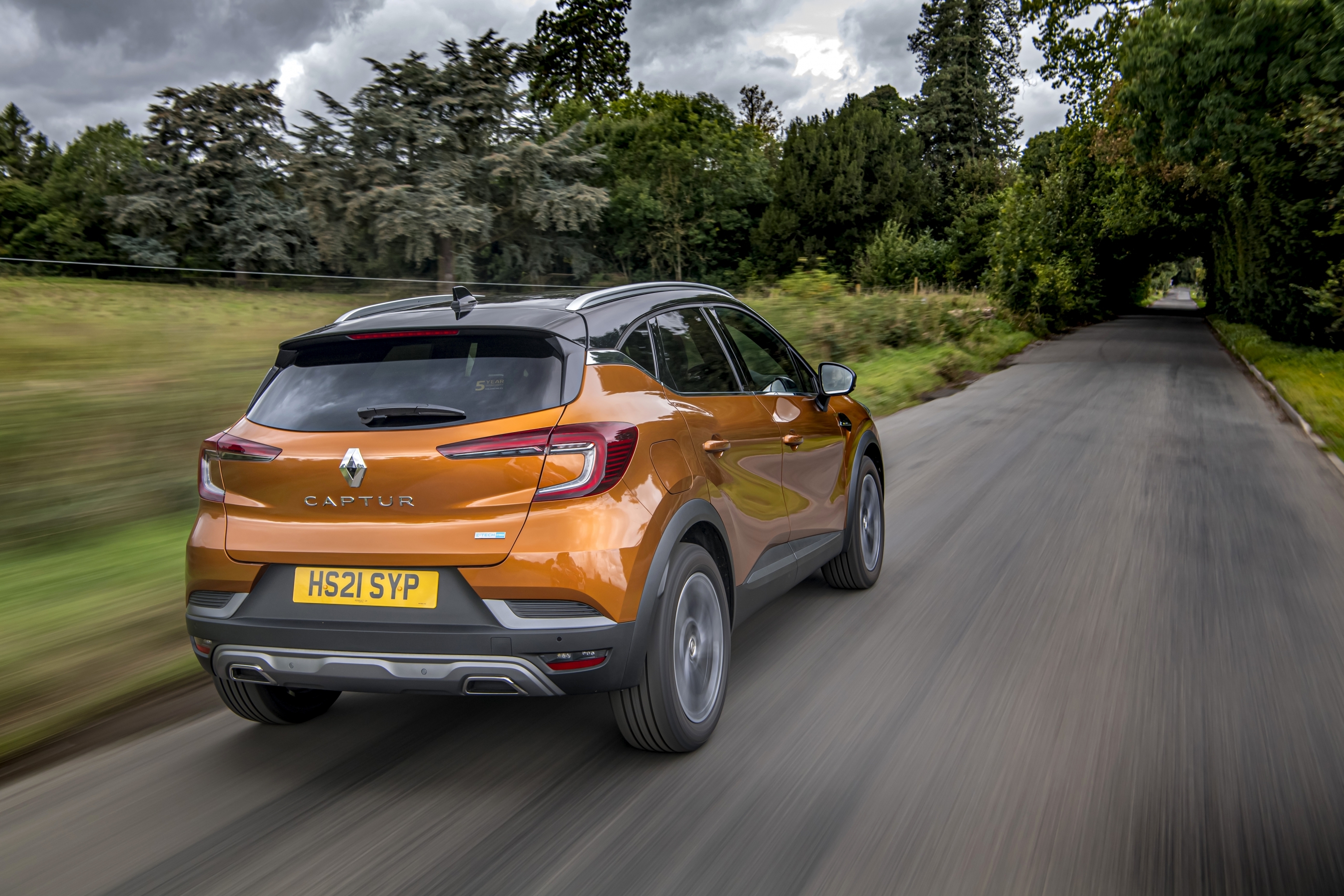UK Drive: Is Renault’s Captur E-Tech a hybrid crossover you should consider?
As part of Renault’s growing electrified range, the firm has introduced the Captur E-Tech. Ted Welford tries it out

What is it?

>
If there are two market trends that equate to big bucks in the car industry, it’s SUVs and electrification. Little wonder then that many manufacturers are combining both of these into one package.
Not least Renault. Its new coupe-styled Arkana is only offered as a hybrid, while the Austal – the replacement for the Kadjar – will be electrified-only when it arrives later this year. In the meantime Renault is expanding the line-up of its hugely popular Captur crossover – last year came the arrival of a plug-in hybrid, and now there is a standard ‘self-charging’ powertrain to choose from. But is it any good?
What’s new?

>
This new self-charging setup is one that’s already been seen in both the Clio and Arkana and is unchanged here with the Captur. Using a clever 1.6-litre petrol engine mated to twin electric motors, Renault claims an impressive amount of driving in urban areas can be done on electricity.
The other new addition here in the Captur is the ‘R.S.Line’ trim level, which proves popular in other Renault models. Bringing sportier styling, it takes inspiration from the firm’s Renaultsport division, even though the French firm has never actually made a sporty Captur.
What’s under the bonnet?

>
The Captur’s powertrain is quite a complex one, even by hybrid standards, with Renault trademarking numerous aspects of it. The basis of it though is the same 1.6-litre petrol engine as found in all of the firm’s hybrid models, paired with motors, a small battery and a clutchless automatic gearbox.
Combined the setup produces 140bhp, which allows for a 0-60mph time of 10.4 seconds and a top speed of 106bhp. The efficiency will be a key draw for many, offering diesel-like fuel economy – Renault claims 56.5mpg and 110g/km CO2 emissions – the latter being low for a vehicle of this type.
What’s it like to drive?
The standout point with the Captur is its electric-running ability. Unlike other hybrids (of the non-plug-in variety), this Renault is able to spend an impressive amount of time running as an EV, and though not for any real distance, it’s able to drive for the most part on electricity at slower speeds, though even at motorway speed you’ll notice it’s able to default to electric-running for short bursts.
It’s a very clever powertrain in this respect and means you should be able to quite easily achieve its efficiency claims in steady driving. It’s not perfect though, with the engine being loud and struggling to settle down – not helped by a dim-witted automatic gearbox – which does take the shine off things.
On the plus side, even on our test car’s large 18-inch alloy wheels, the ride remained comfortable and compliant, putting it ahead of rivals like the Nissan Juke.
How does it look?

>
Renault’s car design is – to our eyes at least – one of the best around, and the Captur remains a very smart-looking choice. Since the second-generation model arrived in 2020, this crossover has been one of the most striking cars in this class, helped by Renault’s large C-shaped LED lights at the front and rear.
R.S.Line adds a sportier edge to the way the Captur looks, bringing its smart 18-inch alloy wheels, a redesigned front bumper that takes inspiration from F1 and a neater shark fin antenna. All of this certainly helps add to this Renault’s style.
What’s it like inside?

>
These high-spec R.S.Line cars get more toys than other trim levels, and particularly in the technology stakes, with a digital instrument screen fitted alongside a large 9.3-inch iPad-like touchscreen. Both are easy to use, even if they don’t have quite the same level of functionality as some rivals.
The quality throughout is largely good, if not what you’d call premium – the small gear selector being a particular gripe. It feels cheap to use, while the operation means manoeuvring can be difficult, as sometimes you think you’re in reverse when you actually aren’t. The Captur isn’t all that roomy either, as space in the back is tight, while the hybrid’s batteries make a dent into the boot’s volume.
What’s the spec like?

>
If you want a Captur in this E-Tech hybrid form, you can’t get it in the usual entry-level Limited trim, and instead have to pick between Iconic Edition, SE Edition and R.S. Line grades.
All versions get a decent amount of equipment, including Renault’s excellent keyless entry system (one of the best around), climate control, 17-inch alloy wheels and a touchscreen and digital dial screen, both measuring seven inches. Upgrading to the Iconic Edition brings front and rear parking sensors, a reversing camera and larger 18-inch wheels, while the R.S. Line predominantly focuses on sportiness, though does get a larger and better 9.3-inch touchscreen.
Prices for the Captur E-Tech start from £25,690 and rise to just shy of £30,000 for a top-spec car with metallic paint added. It works out as £900 more expensive than a similar-powerful petrol car, but an impressive £5,000 cheaper than the plug-in hybrid.
Verdict
This new Captur E-Tech Hybrid feels like the pick of this Renault crossover’s range, bringing an impressively efficient powertrain that should help to reduce running costs, at a relatively small price increase over a standard petrol. We certainly reckon it’s worth choosing over the plug-in hybrid model, as you’d need to do virtually all of your miles on electricity if it was to justify the extra expense.
Combined with decent equipment levels and the Captur’s smart styling, there’s plenty to like, with its noisy engine being the only aspect that takes the shine off it. Regardless, it’s a welcome addition to the hybrid crossover market.





